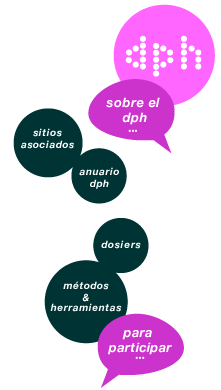PROJECT SUMMARY: Mexico’s National Indigenous Institute (INI)has a network of cultural radio stations which provides a communication service for about 3.2 million people, most of whom are indigenous. The stations broadcast in 28 native languages and reach almost half of the First Nations groups in the country. They are located in the principal towns of the twelve ethnic regions where they operate.
DATE OF THE PROJECT: The INI project began in 1979. The goal of the project was to have set up 26 stations by 1994.
OBJECTIVES OF THE STATIONS: The overall aims of the stations in the network are: a)to help improve the living conditions of the target population; b)to help strengthen the culture of the settlements and communities which fall within the stations’ range; c)to promote and strengthen indigenous organizations as a way of achieving the free development of native peoples.
METHODS: The types of programming used in the stations usually fall into the following categories: (1)educational: to improve the social well-being of the listener, (2)cultural: broadcasts of the communities’ major cultural experiences (music, story-telling, feast days, history, customs and traditions), (3)news bulletins: broadcasts of important events, with a focus on local news provided by regionally-based community correspondent networks, (4)entertainment: mostly music to attract listeners, (5)notice boards: personal or organizations’ messages. Participation of indigenous people in the stations is central to the stations’ operations. This is facilitated in a variety of ways: 1)The staff of the stations is almost entirely native. They are trained professionals but they can also identify with and understand the listeners’ culture and reality. 2)Indigenous organizations produce programmes at Radio Production Centres located at various places within the broadcast area of the station. 3)Networks of community correspondents supply local and regional news. To ensure participation, INI promotes broad involvement in the stations from the very beginning of each project. To do this, research is done in every community before a station is set up. The research plan involves three separate branches. The first is a socioeconomic investigation whose aim is to determine in general terms the social, political and cultural infrastructure of the region. The second branch of research looks at media use and the habits of future listeners. The third branch is a participatory research project designed to define jointly with the listeners the specific aims of the station, what it will broadcast, and how community participation will be achieved.
EVALUATION: Studies have indicated that there is a high listenership in the stations. The common experience of the broadcasters and listeners has been extremely important for this as people are able to hear programs in their own languages on issues which they can identify with. The type of participation and its success have varied throughout the network. The Zapotecs in the mountains of Northern Oaxaca use radio as a vehicle for discussing the projects of their various organizations and their successes and failures. However, the Raramus have only used radio as a means of interpersonal and community communication. Community participation has not been consolidated as all the links that are necessary have not been made. Participation continues to be spontaneous and individual. There is a feeling that it must be more organized and consistent. However, it is felt that this is in part a reflection of the level of development of native people’s movements and the extent to which they are present on the national political scene.
Palabras claves
comunicación, radio comunitaria, participación de la comunidad
, México
Notas
There exist a French and a Spanish version of this book. This card has been written from the chapter 15.
Fuente
Libro
VALENZUELA, Eduardo, AMARC=ASSOCIATION MONDIALE DES RADIODIFFUSEURS COMMUNAUTAIRES, BLACK ROSE BOOKS, 1992 (CANADA)
AMARC (Association Mondiale des Radiodiffuseurs Communautaires) - Sécrétariat international : 705 rue Bourget, bureau 100, Montréal, Québec, CANADA, H4C 2M6 - Tél : + 1-514 982-0351 - Fax : + 1-514 849-7129 - Canadá - www.amarc.org - secretariat (@) si.amarc.org



